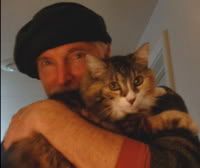Dia de los Perros II: The Further Mysteries and Mythos of Dogs

Not all myths and stories cast canines in a positive light. Dog-like anima have always cased the shaded borderlands of our psyches. The mutant mongrels and werewolves that prowl vast stretches of that fearsome place are strange and varied. Anubis, Egyptian god of the underworld, had the head of a jackal, and Cerberus, the guardian at the gates of the Greek underworld, was a three-headed dog. This myth was borrowed by J.K. Rawlings to create the three-headed giant, Fluffy, guard dog of the Chamber of Secrets in Harry Potter. Conan Doyle’s classic Hound of the Baskervilles also tells of our darker projections onto dogs.
If our dogs be truly magical, then in late October and early November, when the veil between this world and the next is said to be tissue thin, let us keep them close so they can alert us to things indecipherable by our feeble human faculties. Not only can they hear and smell with more acuity than we can, they also have a well-documented sixth sense. According to the research of Rupert Sheldrake in his book, Dogs that Know When Their Owners Are Coming Home and Other Unexplained Powers of Animals, many dogs can sense impending natural disasters, threats to their owners, insulin reactions, and epileptic seizures. Obviously, dogs move gracefully through worlds that remain completely hidden from us.
So in this season of dimming light, pay close attention to the canine by your side. When you walk him in the evening, take note of each twitch of his nose and twist of his ear. What could he be sensing? One of your dearly departed friends or relatives returning to pay a Halloween visit? A packmate long past, divided from him only by that wispy curtain called time?
If you can’t find a clay dog to place on your Day of the Dead altar, perhaps another ritual will do. Sit quietly and remember the names of all your dearly departed canine allies. Imagine them somewhere deep in the darkness, sniffing the breeze for your scent, eagerly awaiting your reunion for one last, great adventure.
Note: The evocative illustration is by Alison Smith


